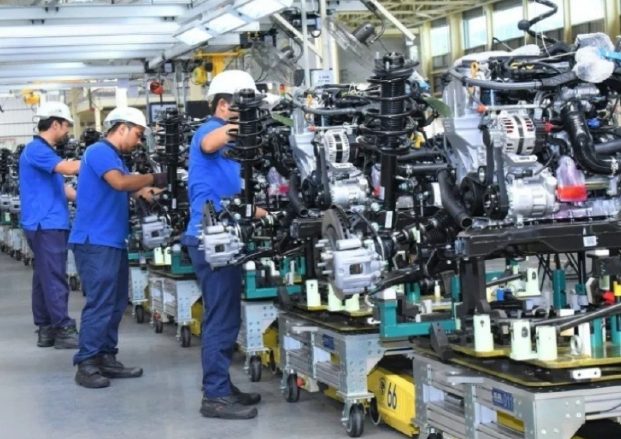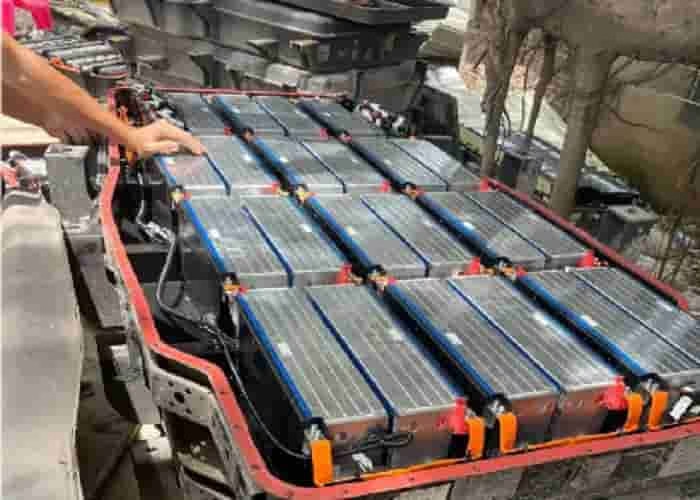New energy vehicles were only born in China? In addition to China, why are many countries unwilling to develop “new energy vehicles”? Four reasons are too realistic
BYD’s sales have exploded, and Wenjie, Xiaomi, and Ideal have taken turns to top the list. China’s new energy vehicles have completely “risen”! But if you look at the world, you will find a contradictory phenomenon: there is little movement outside of Tesla in the United States, European consumers are buying slower and slower, and Japan and South Korea are still playing with oil-electric hybrids.
My brother Lang has been working in the automotive industry for 20 years and has witnessed the explosive growth of China’s new energy vehicles from 0 to 1. Charging piles are becoming more and more dense in the streets and alleys, and many people have installed home charging piles at home. It is not an exaggeration to say that it is a “national god car”. But why are new energy vehicles in full swing in China, but have become “wait-and-see products” in other countries?
After checking a lot of information, I found that these four reasons are too realistic! Let’s analyze in depth why the pace of the world is completely different from that of China.
1. The cost of industrial transformation is too high, and they are afraid of ruining their own jobs
When it comes to this issue, many traditional automobile powers are actually trembling with fear. Which of these countries, Germany, Japan, and the United States, does not rely on “oil cars” for their livelihood? New energy vehicles are not just about cars, but a whole set of economic structures.
Once electric vehicles are really fully implemented, it is not as simple as changing the engine, but the entire system must be torn down and rebuilt. The original engine, gearbox, exhaust treatment and other parts are no longer needed. People must be retrained, equipment must be repurchased, and supporting factories and supply chains must also be changed. Decades of technology accumulation and trillions of R&D funds may all be “wasted” in an instant.
The most realistic example is Japan. It produces seven or eight million vehicles every year, and this industry chain has driven more than 10 million jobs, equivalent to more than 11% of the country’s labor force. In other words, every step forward in electrification may cut off the jobs of tens of thousands of people.
Akio Toyoda has previously bluntly mentioned: If Japan turns to pure electricity too quickly, it may directly kill 5.5 million jobs and 8 million vehicles by 2030, which will put the country into a “manufacturing vacuum”! This is not alarmist, but a bloody reality. Considering this situation, some countries are naturally unwilling to take this risk.
I understand the concerns of these countries. After all, no one wants to “dissuade” their pillar industries. But this also shows how important China’s forward-looking layout in the field of new energy vehicles is.
2. Imperfect charging infrastructure and difficult promotion
This is really realistic! Why do electric cars run fast in China? A key reason is that “charging is not difficult”.
Fast charging piles can basically be found in highway service areas, and they are also gradually becoming popular in business districts, basements, and communities in big cities. Even if you don’t have a private parking space at home, you can rely on “charging at hand” to solve the battery life problem. I often drive electric cars in cities such as Beijing and Shanghai, and charging is indeed very convenient.
But in foreign countries, this is not so easy. For example, in the United States, many people live in single-family houses in the suburbs. If they want to install a charging pile, they not only have to pay the installation fee, but also have to go through the power approval process, and even have to modify the distribution box themselves. This process is so complicated that it makes people “overwhelmed”.
The situation in Europe is more complicated, especially in those old urban areas. The power grid is old and has low capacity. To change a charging pile, not only approval is required, but also digging and construction are required, which is more noisy than installing an elevator. I have a friend in Germany who spent half a year to install a home charging pile.
Not to mention Southeast Asia and the Middle East. Even the basic electricity is unstable, and we still expect them to build a large-scale charging network across the country? To put it bluntly: electric cars in China are “pile waiting for people”, but in other countries, “people look for piles for a long time.”
In this case, it is not that consumers are unwilling to accept electric cars, but that the conditions do not allow it at all. It’s like you want to buy a “national god car”, but you find that there is no place to charge it anywhere, so you might as well continue to drive a “gas tiger”.
3. Lack of strong policy promotion
The development of new energy vehicles in China is not spontaneous, but the product of government-led + industry collaboration. We have car purchase subsidies, license plate preferential treatment, and traffic restriction exemptions. The “double points” policy forces car companies to transform, and there is investment from the national to local levels to support the construction of charging piles.
This policy combination of “the law of true fragrance” brings real benefits to consumers when buying new energy vehicles. In Beijing, it is difficult to get a license plate for fuel vehicles, but new energy vehicles can get green license plates directly, which is too tempting.
Other countries are mostly market-driven and lack such strong policy intervention. For example, the United States did not increase its investment until Biden took office, but the intensity is still far behind that of China. Although Europe is driven by environmental pressure, the pace is not as radical as China, and the policies of various countries are not unified, and the implementation intensity is uneven.
I remember when Tesla first entered China, Musk lamented the Chinese government’s support for new energy vehicles. This policy dividend is not a short-term discount, but a long-term strategic layout, which makes the entire industry chain “stand up”.
Without this policy promotion, the development speed of new energy vehicles will definitely be much slower if it relies solely on market spontaneous regulation. It’s like if you want a car to accelerate, it’s not enough to just step on the accelerator, but you also need good road conditions and policy environment to cooperate.
In general, it’s not that the whole world doesn’t want to make new energy vehicles, but that many countries can’t make them. What they lack is not only charging piles and policies, but also the support of the underlying logic: the energy structure is not good, the industry cannot be transformed, and the society cannot bear the pressure.
China is just in the right place at the right time, right place, and right people. For us, this is not a “must-do” choice, but the most suitable way. We are already standing at the starting line that others envy.
As consumers, we should cherish this opportunity. Buying new energy vehicles now not only saves money and is environmentally friendly, but also enjoys the latest intelligent technology. This advantage may not be caught up by other countries in the next few years.
New energy vehicles were only born in China? Faced with such a realistic gap, do you think China’s new energy vehicle development model can continue to lead? How long will such a policy dividend period last?
















Leave a Reply